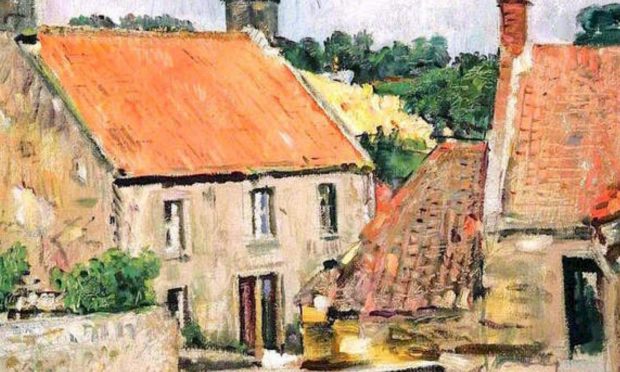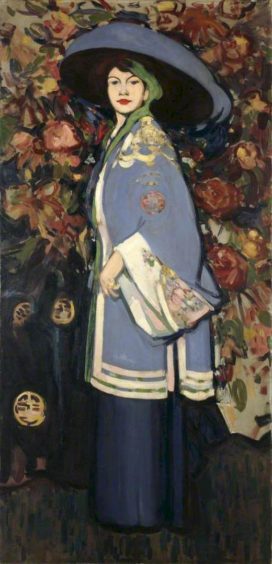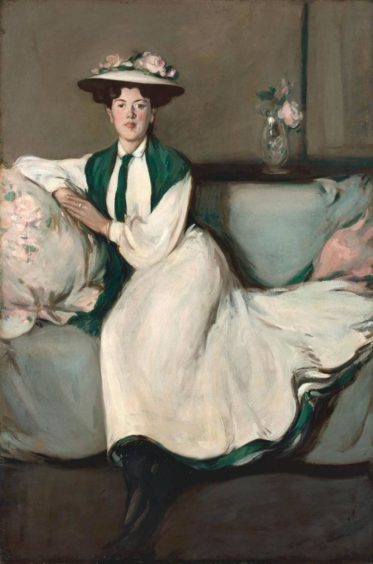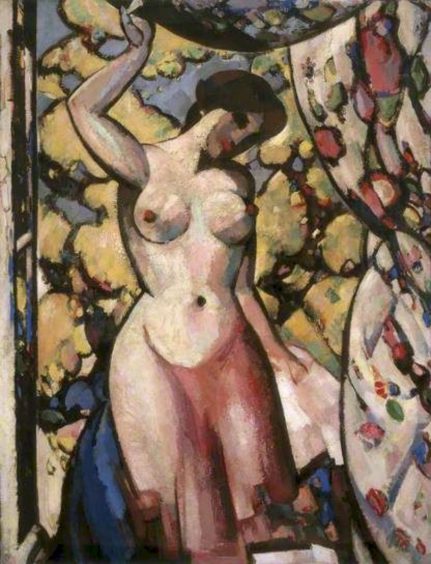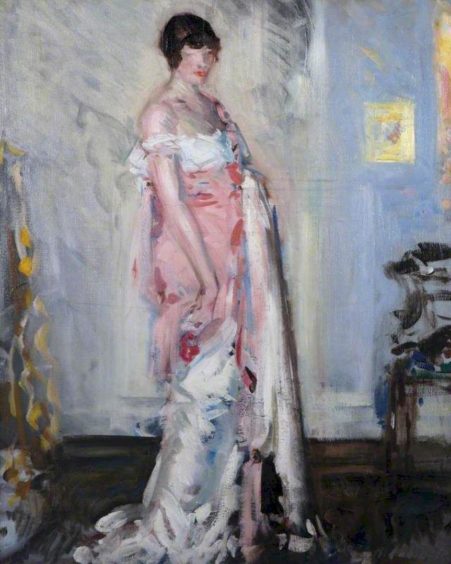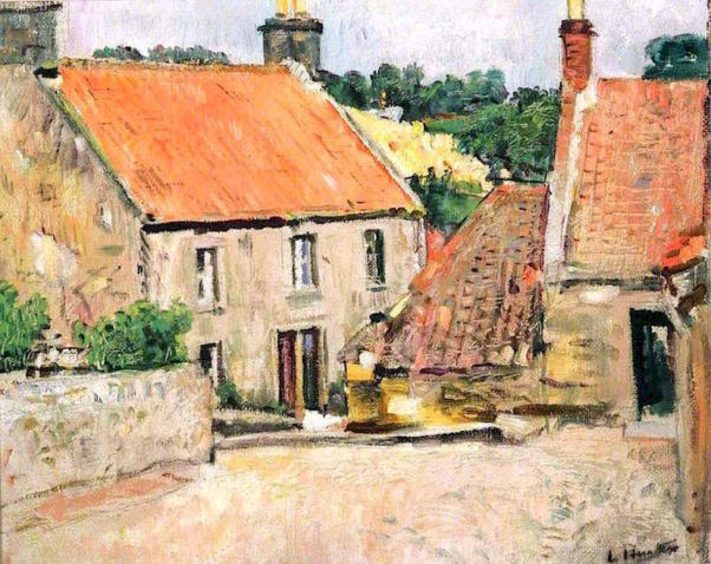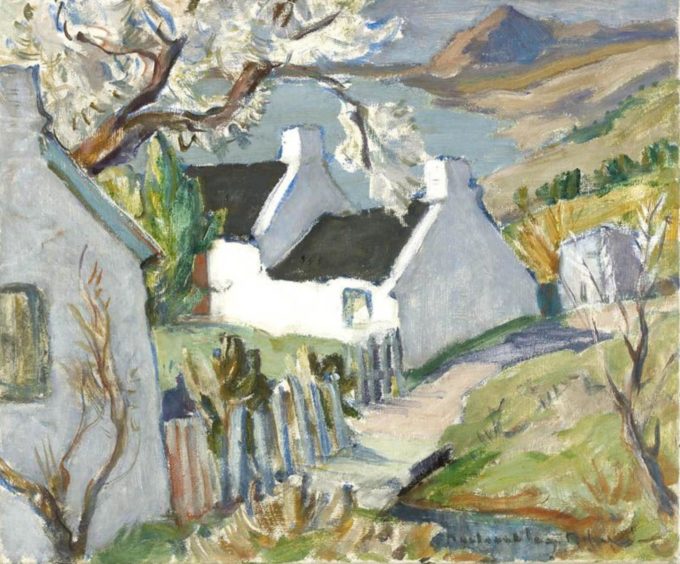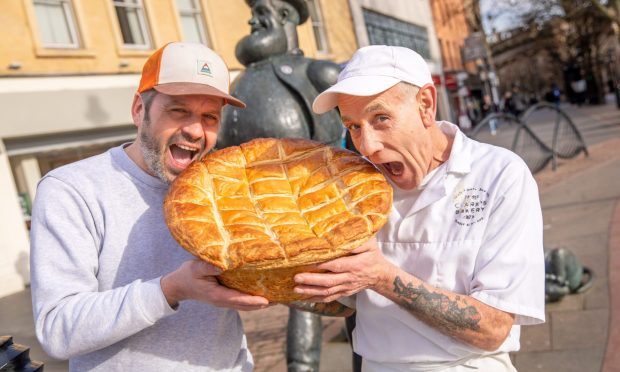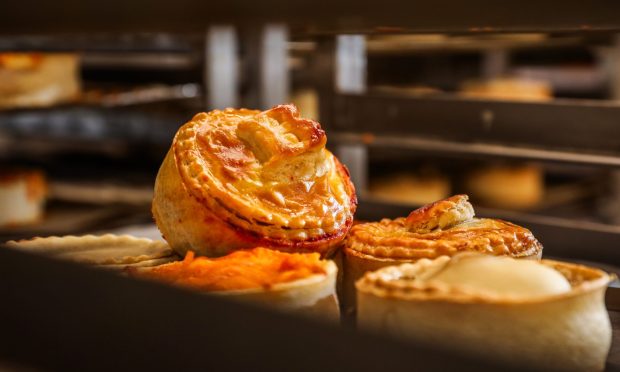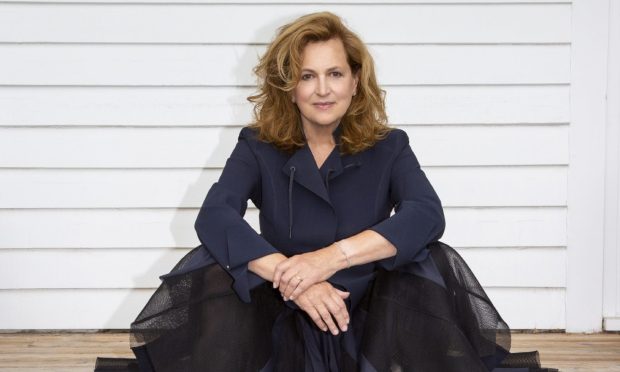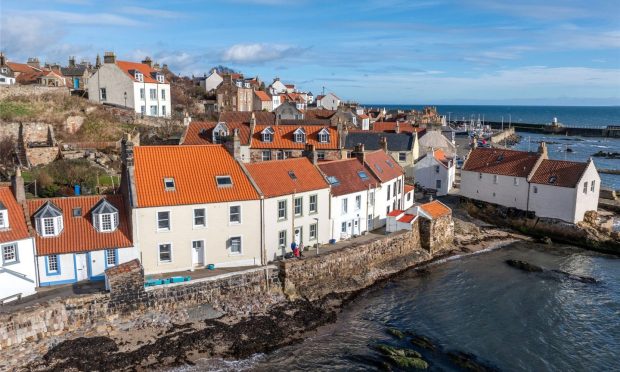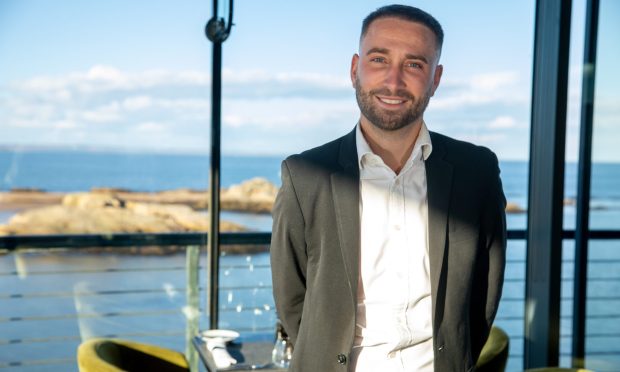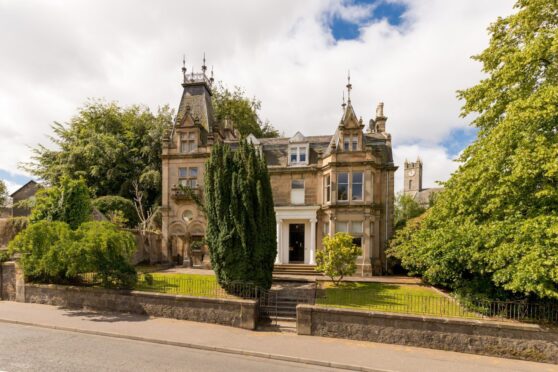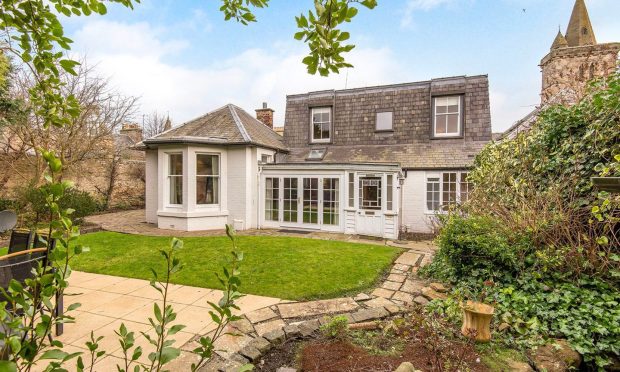A group of early 20th Century artists’ long-lasting influence makes an exhibition currently being staged in Perth something of a must-see.
One of two displays now on offer at the Fair City’s recently reopened Fergusson Gallery, The Colourists is a celebration of the pioneering post-impressionist work developed from the 1900s through to the early 1930s by the venue’s namesake John Duncan Fergusson and his fellow Scottish Colourists — Francis Cadell, Leslie Hunter and Samuel Peploe.
Culture Perth and Kinross collections officer Amy Fairley has curated the Marshall Place exhibition, which comprises valuable works from the charitable trust’s extensive holding.
It also includes a series of paintings with connections to the Colourists and in particular Fergusson, who was famously coupled with choreographer Margaret Morris from 1913 until his death in 1961.
One of the exhibition’s centrepieces is the Leith-born innovator’s Le Manteau Chinois, from 1909.
“It features Anne Estelle Rice, who was an American artist and a one-time girlfriend of Fergusson,” says Amy.
“The two of them met in Paris after she’d been sent over by a department store in America called Wanamaker’s to record the Parisian fashions and report them back.
“She was a very accomplished artist in her own right and like Fergusson she painted in the style of the Fauves, led by Henri Matisse and André Derain. There’s a slash of green that comes down past Anne Estelle’s cheek and that’s very Fauves-like.”
Another major exhibit is Fergusson’s The White Dress (1904), which is a lifesize image of his then partner Jean Maconochie.
“Its background is very buff and plain, yet in the Rice portrait there’s a wildly patterned floral background and she’s dressed in a fashionable Chinese robe,” adds Ms Fairley.
“All things Oriental were highly fashionable round about the 1900s. A lot of artists went to visit the Trocadero and the museums around Paris and enjoyed looking at the Oriental exhibitions and Oceanic masks.
“We also have At My Studio Window, which was painted in 1910. It has a really busy background and floral designs. You can see the influence of Matisse, who painted his famous Blue Nude just a few years earlier and it was unlike anything anyone had ever seen at the time.
“Fergusson must have been aware of it, and it’s just an incredibly bold painting. Around about that time he did a series of monumental, statuesque female nudes. They helped set him apart.
“Of all the Colourists he was the only one that really tackled the female nude, and it became one of his favourite subjects. He outlived the others by a number of years, and he was also the only one to experiment in 3D in sculpture.”
Internationally recognised up to World War Two, the Scottish Colourists — as they posthumously became known in the 1950s — only ever exhibited as a group on two or three occasions and rejected the notion that they were part of any movement, or anything other than individual artists.
However, Fergusson and Peploe were close friends and regularly painted together in Paris and on visits to French coastal locations from 1904-09.
“There’s a wonderful photograph of them taken during those years which shows them both in three-piece suits lounging by the sea with beach boxes and huts behind them,” laughs Amy. “It’s sort of formal but informal at the same time.”
A trademark Peploe still life from 1931 showing roses nestles at Perth alongside vibrant works by the other key contributors to what was an identifiably Scottish take on contemporary French painting in the 1920s and 1930s.
“Still life was the genre Peploe was most captivated by and it was the one he worked on over and over again,” explains Amy.
“The Hunter we have is Cottages In Largo, which we felt was the strongest example of his work that we had available. It was quite sad, because his family originally moved over to California where all of his work was destroyed by an earthquake.
“Unlike Fergusson, he responded a bit more slowly to the radical developments that were taking place in Paris in the 1900s and it wasn’t until the 1920s that he adopted a brighter colour palette and a freer handling of the paint.
“We also have Cadell’s Girl In Pink And White from 1911. He visited Venice in 1910 which helped to free up his painting technique and inspired him to paint in a loose, fluid manner, which is especially visible in the work we’ve got on display.”
Lesser known artists also on show
Visitors to the Fergusson can also look forward to seeing paintings by other less recognised Scottish artists of the Colourist era.
“We have a work called Painter’s Portrait by Donald Bain who, a bit like Fergusson, was a self-trained artist,” says Amy.
“When he moved back to Glasgow after the war, Fergusson really became a father figure for a lot of Scottish artists and he took Bain under his wing and helped to try and promote him.
“Margaret Morris set up the New Scottish Group and the New Art Club and they attracted a lot of artistic types. Donald Bain was probably one of the best known, and Fergusson made an introduction to Picasso for him to try and help him establish himself.
The fifth Scottish Colourist
“We also have Sir William MacTaggart’s lovely After The Storm, Loch Tay. He was the grandson of the 19th Century landscape painter of the same name and spent a long period in the south of France and must have been aware of thei Colourists’ work. He produced canvasses that were heavy with paints and used really strong colour.
“Then there was John Maclauchlan Milne, who’s sometimes known as the fifth Scottish Colourist. He spent more than a decade in France, but because of the worsening economic situation in Europe in the 1920s his visits became fewer and fewer and he began to paint landscapes in the West Highlands.
“Our piece is High Corrie, Arran from the 1930s. The island landscapes around Corrie and Sannox became sources of inspiration for Milne’s later work.
“He’d earlier painted many vibrant Parisian cafe scenes, as did Fergusson, so it was almost as if they were following in each other’s footsteps such were the similarities in many of their works.”
The Scottish Colourists have enjoyed a major critical revival since the 1980s and the accepted view of them as hugely influential is one that Ms Fairley firmly endorses when asked to reflect on their legacy. “They played such an important part in the history of Scottish art,” she declares.
“Like the title they were given suggests, they just freed up the use of colour. When you think about the Victorian era it’s quite dark, then the Glasgow Boys paved the way, with the Colourists following on.
The Colourists and the Glasgow Boys
“In Fergusson’s book he writes about modern Scottish painting and is really quite nationalistic. The Glasgow Boys offered up an example of a free and independent approach that hadn’t been seen in Scottish art before, and they allowed the Colourists to come in and push it further.
“They produced work that’s now known for its colours and confidence, and inspired contemporaries and the next generation — and they continue to inspire artists in Scotland and beyond.
“We loaned work to Canada recently for an Emily Carr exhibition and they were using two of our Fergusson paintings as examples of the influence he had on her work.
“Fergusson positioned himself right in the emergence of modern art in Paris. Unlike any other British artist he was commenting on it in his own way by producing art that reflected what was going on at the time.”
Then and now
The Fergusson Gallery reopened following lockdown at the end of April and Amy admits being asked to pull together new exhibitions has been a challenge.
However, she sees parallels between the outward-looking aspect to the Colourists’ European perspective a century ago and today’s hopes for a recovery from the ravages of an ongoing pandemic.
“Fergusson and his contemporaries were emerging into a world post-First World War that celebrated the spirit of the Jazz Age, and now that we’re emerging into a world post-Covid there could be an emergence of another similar period of celebration,” she adds.
“Both generations have been through a very strange unprecedented time, so we wanted to celebrate that in this exhibition and also make it bright and colourful. We’ve been shut for over a year and I’m just excited that people are able to come and visit again.”
- The Colourists is free to visit every Thursday to Monday until September 30.
